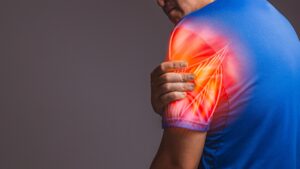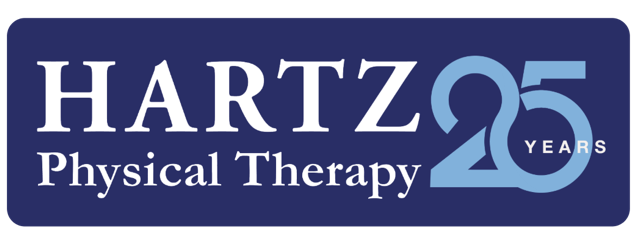Written by Brynn Cagno, PTA
Article
 Delayed Onset Muscle Soreness otherwise known as DOMS is the phenomenon where your muscles get sore not directly after your workout but anywhere between 12-48 hours after activity and can stick around for up to 7 days after. DOMS is totally normal and can affect anyone regardless of current fitness level after being exposed to increased intensity or weight resistance during a workout or exercise program. This means that when beginning physical therapy (which likely requires starting an exercise program depending on your diagnosis) you may experience DOMS since you are introducing new activity to your joints and muscles. Learning the signs of delayed onset muscle soreness and what to do about it are helpful to the recovery process and will reassure you that your physical therapy treatment is not making your condition worse!
Delayed Onset Muscle Soreness otherwise known as DOMS is the phenomenon where your muscles get sore not directly after your workout but anywhere between 12-48 hours after activity and can stick around for up to 7 days after. DOMS is totally normal and can affect anyone regardless of current fitness level after being exposed to increased intensity or weight resistance during a workout or exercise program. This means that when beginning physical therapy (which likely requires starting an exercise program depending on your diagnosis) you may experience DOMS since you are introducing new activity to your joints and muscles. Learning the signs of delayed onset muscle soreness and what to do about it are helpful to the recovery process and will reassure you that your physical therapy treatment is not making your condition worse!
Activities that can feel particularly sore with DOMS include but are not limited to, getting in and out of a chair, going up and down stairs, bending over to pick something up off the floor, and lifting your arms up over your head, especially if these activities were simple and pain free to begin with. DOMS is caused by placing more stress on the muscle fibers than what they are used to, which usually happens with increasing weight for an exercise, or introducing a new movement to the muscle group. A usual course of orthopedic physical therapy has the potential to cause this temporary condition even if you would consider yourself a fairly active individual.
So what do you do if you experience DOMS? Don’t worry, it doesn’t mean you’re going backwards in your progress! In order to improve strength, muscles need to be exposed to stimuli greater than what they are used to and some level of soreness is to be expected, especially in the beginning. Let your therapist know that you are experiencing soreness at your next session, they may decrease the intensity of your treatment program or give you new stretches to do after your session to decrease stiffness and soreness. Although it may feel uncomfortable at first, movement is best to address the symptoms of DOMS to prevent increasing stiffness. In the meantime, try these tips below to help with the extra soreness:
- Gentle stretching
- Take a warm bath or shower or use a heating pad
- Gentle massage to the sore muscle(s)
- Rest – You should wait at least 48 hours before working the sore muscle group out again to the same intensity.
- Stay hydrated
- Move – try not to stay in one position all day. get up and move around to prevent stiffness
Do your best to engage in a more active recovery throughout the day after your treatment sessions. Walking and choosing to stand more than sit when possible will prevent stiffness. Rest is important when beginning new strengthening programs but don’t neglect your HEP (home exercise program) and stretching!
